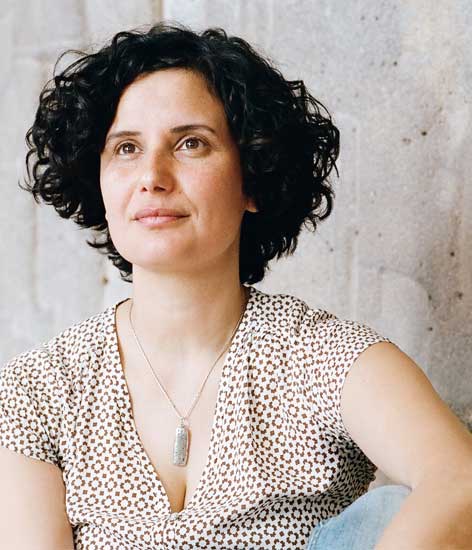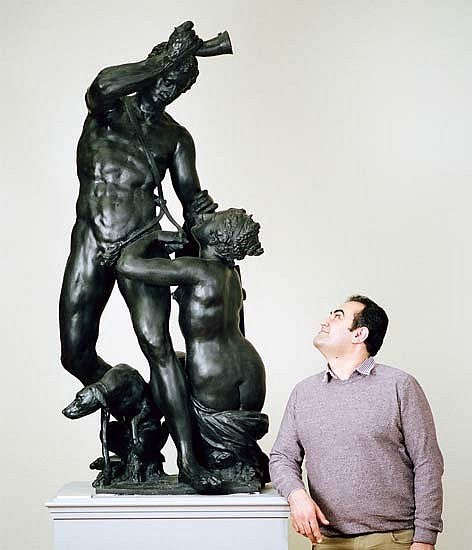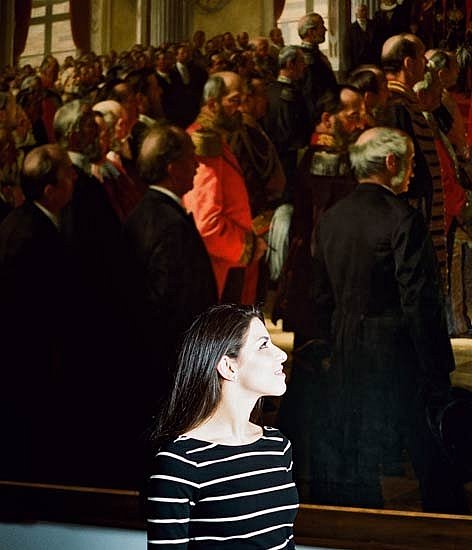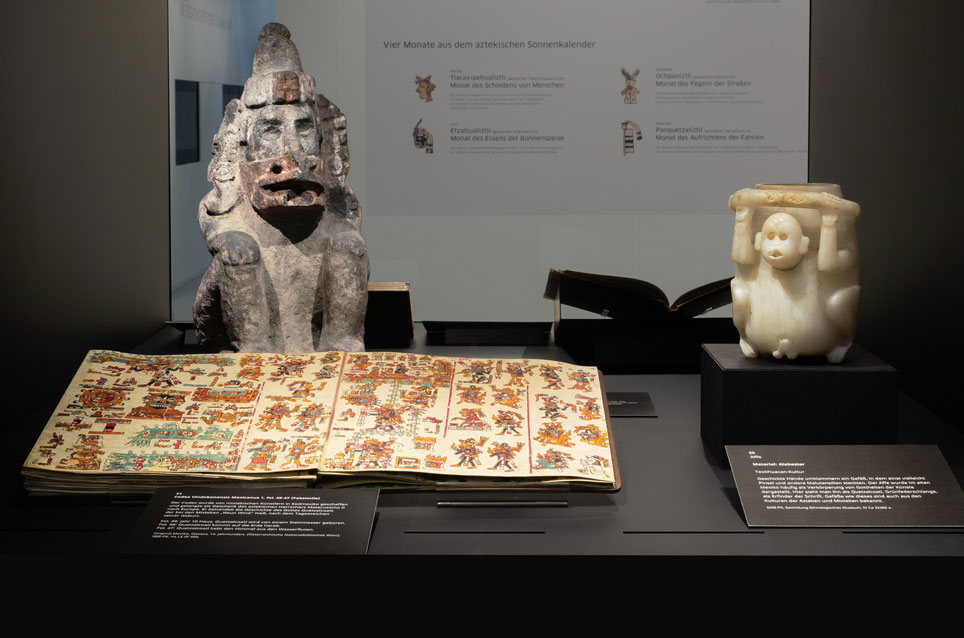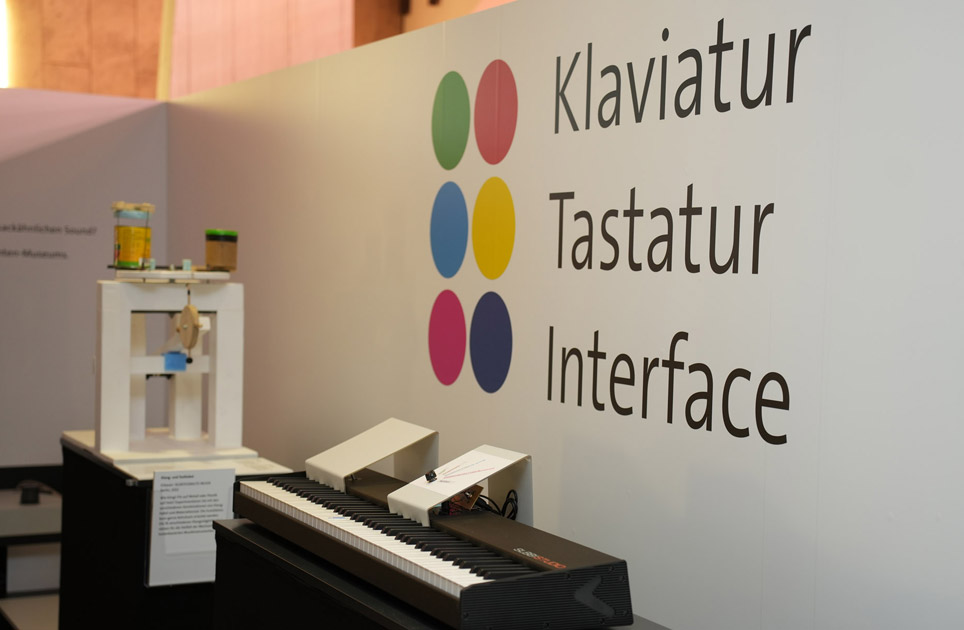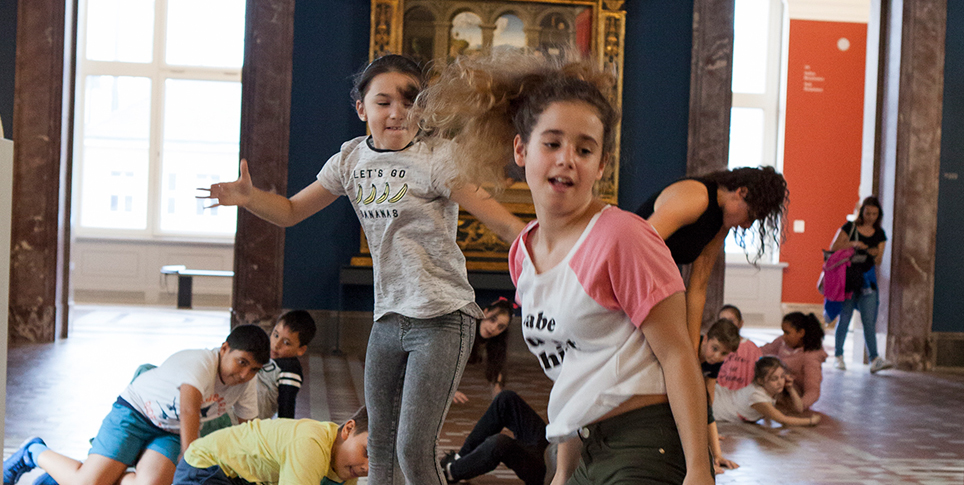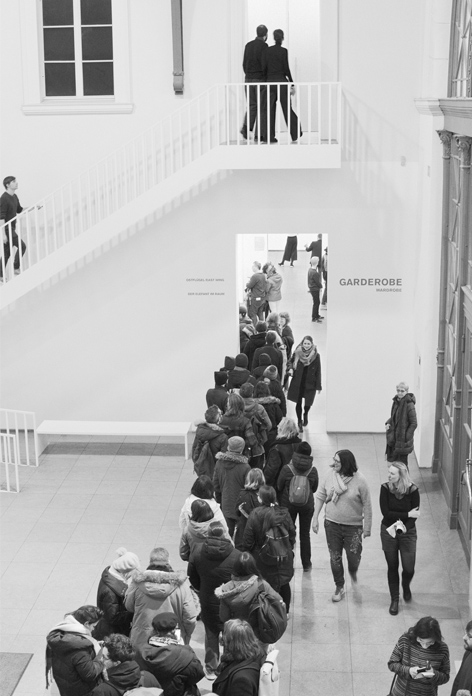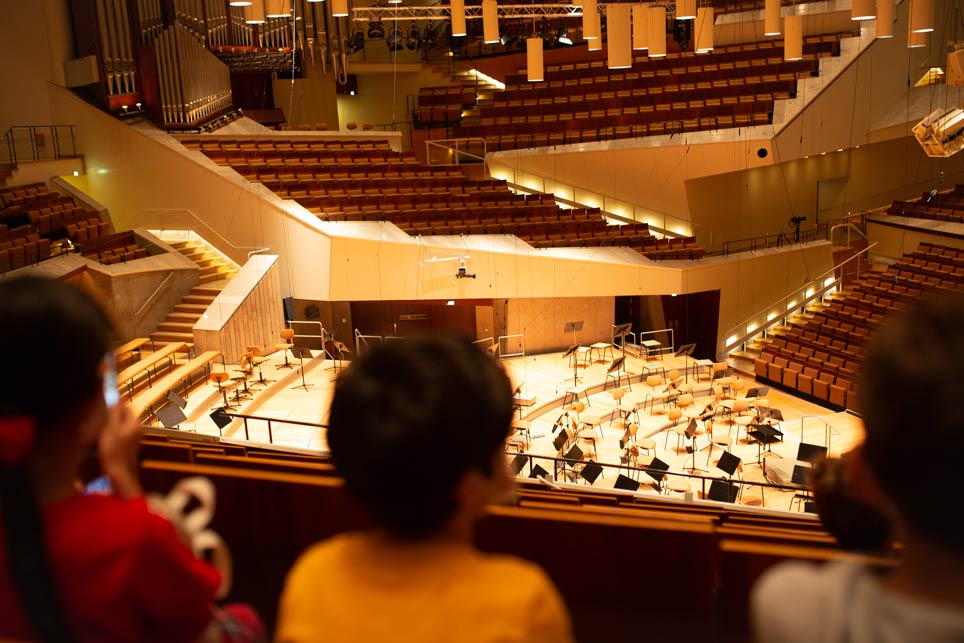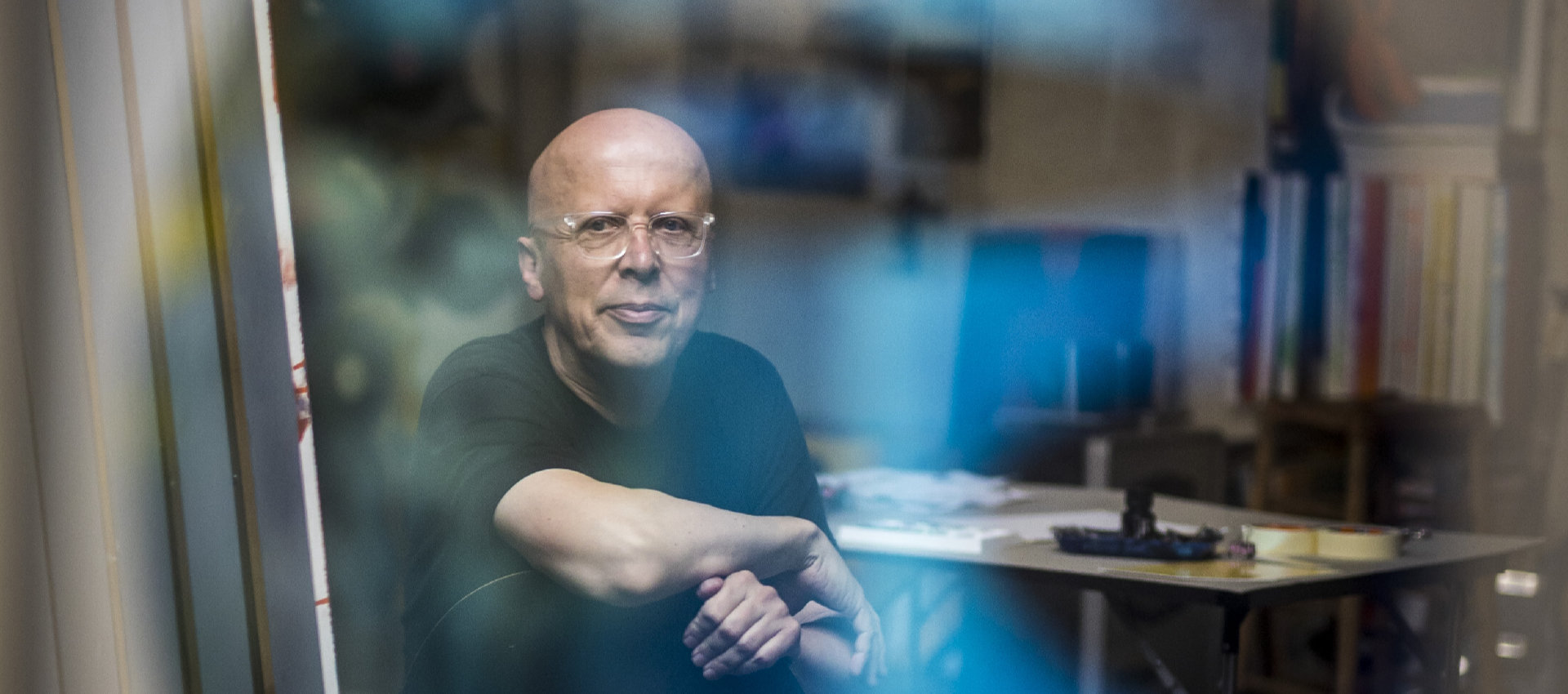The Multaqa project helps new arrivals to become museum guides. Five of them explain what old stones and silent images can teach us about “home”.
“Multaqa: Museum as Meeting Point” is a project to train refugees from Syria and Iraq as museum guides. They give tours to their compatriots in their native language, taking in the Pergamon Museum, the Bode Museum, and the German Historical Museum. The project was developed by the Museum für Islamische Kunst (Museum for Islamic Art) as part of the Staatliche Museen zu Berlin (National Museums in Berlin). It initially received funding from the Federal Ministry of Family Affairs, Senior Citizens, Women and Youth, and is now also supported by the Federal Government Commissioner for Culture and the Media. Minister of State Monika Grütters has awarded the Multaqa project a special prize for cultural projects involving refugees.
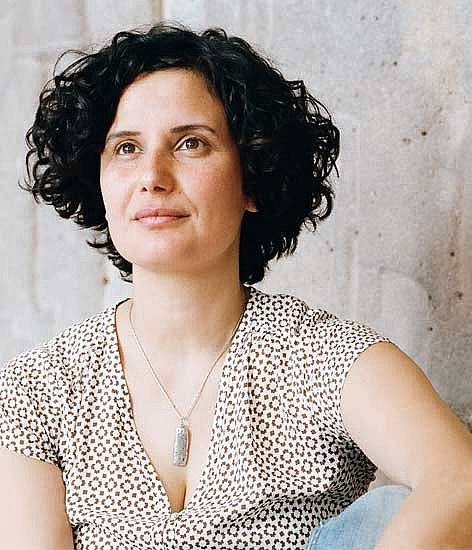
Vorderasiatisches Museum im Pergamonmuseum: Syrien- und Kleinasienraum, Reliefs vom Tell Halaf © SPK / Ina Niehoff
My Museum: Kefah Ali Deeb
Born in Latakia, Syria, in 1982. Fled to Germany in 2014.
Kefah wanted to change the political system in Syria. After being arrested and threatened, and seeing no prospect of living in peace in her own country, she decided to flee. The Vorderasiatisches Museum (Museum of the Ancient Near East) has become her museum, she says.
It reminds her of the National Museum in Damascus, which she used to visit almost daily. “I belong to these objects, to this culture. And the objects here also belong to me, to us,” she explains. That is what she wants to communicate to the visitors who she guides through the museum. In Kefah’s mind, the exhibits symbolize her personal identity and her history.
They give her self-awareness and assurance, and thus the courage to behave more openly in a foreign land. She firmly believes that this is a way for integration to succeed. The statues and reliefs have the power to mediate between cultures. To Kefah, “home” means recollection and remembrance. So here in Berlin, she is creating a new home bit by bit, day by day. The museum is helping her do it. Nevertheless, she still wants to find peace in Syria too. The war must stop, and the detainees in Assad's prisons must be released at last, she insists. “You should never stop wanting to change things!”
Across The Bridge With Adonis:
Tarek Agmad
Born in Damascus, Syria, in 1981. In Germany since 2015
Tarek, a former professor of classical archaeology, doesn't like talking about himself or about his escape. His eyes light up, however, when he guides other Syrians through the Bode Museum and tells them about the statues and paintings on display. He wants to show them how cultures transcend borders and always have done. What people think of as their own culture relates not only to them, says Tarek, but to many other groups too – in fact, to the whole of humanity. Understanding that you share so much with others, even if you don't all speak the same language, is a basic step towards a society that can accept differences.
Cultural similarities unite people across borders. He picks out a figure of Adonis to illustrate his point. This character from Greek mythology also found a place in the Syrian cultural consciousness. Art is like a bridge, remarks Tarek: it reveals connections and continuities between things that appear to be different. He hopes that it will become the spiritual home for people of all kinds, regardless of their culture, nation, or era.
I Can Smell The Marble:
Razan Nassreddine
Born in Damascus, Syria, in 1987. Came to Germany in 2012
The niche from a Samaritan house in the Museum für Islamische Kunst (Museum of Islamic Art) is like a small piece of Damascus for me, says Razan. When she stands before it, she can smell the old familiar smell and sense the coolness of the marble.
The guided tours and meetings in the museum feel like a gift, enhancing her memories of her home country and furnishing opportunities to meet people of different religions and political backgrounds. The visitors who she takes on guided tours also find something familiar here. Their experiences are similar to her own, regardless of whether they come from Damascus, Mosul, or Kabul.
Integration is a too big a word for what happens during the hour they spend in the museum, cautions Razan, now a culture manager, but it is a first step in that direction. The fear of a new culture is assuaged by the sight of these ancient stones, which tell of their distant homeland. These new arrivals in Germany realize that, in a way, the items in the museum have migrated here before them. Razan herself came here some years ago for an internship, which she has since completed, but she would like to return to Damascus at some point. She also wants freedom and peace to reign in Syria. You need to be able to go back home, she says. As long as this is not possible, she too will be a refugee.
New Coexistence: Zoya Masoud
Born in Damascus, Syria, in 1987. Came to Germany in 2012
This magnificent interior wall paneling hints at what Aleppo must have been like more than four hundred years ago. Flanked by Ottoman ornamentation, we discover the Virgin Mary seated, with Jesus as a child. Nearby are Chinese mythical creatures and courtly scenes in the style of Persian book illustration. The diversity of cultural influences embodied in a room that seems, at first glance, to be of Syrian Arab origin, astonishes a fair number of the museum visitors who she shows it to, says Zoya. Many of them even come from Aleppo, but few of them knew anything about this aspect of their own cultural history.
On Zoya's guided tours, they find out that it is a lot more international than they had assumed. This is important because if people realize that their own culture has always been developing through exchange with other cultures, they can open up to new things with confidence. So for Zoya, her guided tours are about more than giving refugees a break from a daily routine dominated by dealing with the authorities. She hopes to help new, stable, cultural identities to evolve. Without them there will be no real integration, because, as she sees it, integration is not about different groups coexisting in a society, but about a new sense of togetherness.
Hope Like The Germans:
Sandi Albahri
Born in Damascus, Syria, in 1991. Has lived in Berlin for one and a half years
If she stands on a chair in front of the painting, Sandi is face to face with two defining figures of German history: Kaiser Wilhelm II and Bismarck, along with various dignitaries and diplomats. Sandi remarks that Germany had many problems in the past – especially after the two world wars – but today it is a wonderful country.
That is why that she has chosen to offer guided tours at the Deutsches Historisches Museum (German Historical Museum). There she can show people from Syria and Iraq that difficult times can arise in any country, at any point in history. She can help them to see that if ordinary people have the courage to make a new start and rebuild, then they can overcome adversity and change the course of history for the better.
Here in Germany, she believes, everyone is aware of these possibilities. So when she leads a tour, Sandi often focuses on exhibits from Germany's recent past, such as a piece of the Berlin wall. She sees them as sources of encouragement that can persuade the refugees not to give up the hope that peace can be brought to their country. After all, like almost everyone who she takes through the museum, she too wants to return to Syria at some time – to a country where there is hope and a future.
Bode-Museum
The Bode Museum of the Staatliche Museen zu Berlin (National Museums in Berlin) marks the northern end of Museumsinsel (Museum Island). Completed in 1904, the building now houses the Skulpturensammlung (Sculpture Collection), the Museum für Byzantinische Kunst (Museum of Byzantine Art) and the Münzkabinett (Coin Cabinet). Around 150 images from the Gemäldegalerie (Old Master Paintings Collection) are also on show there.
The concept behind the building, initially named the Kaiser-Friedrich-Museum, was developed from ideas suggested by Crown Princess Victoria in the early 1880s, which Wilhelm von Bode turned into reality. In 1956, it was renamed after its intellectual father: Bode Museum.
Pergamonmuseum
The Pergamon Museum was built between 1910 and 1930 – the last of the five buildings on Museumsinsel (Museum Island). Today, it houses three collections belonging to the Staatliche Museen zu Berlin (National Museums in Berlin). These are: the Antikensammlung (Collection of Classical Antiquities), the Vorderasiatisches Museum (Museum of the Ancient Near East), and the Museum für Islamische Kunst (Museum of Islamic Art). The Pergamon Museum thus contains cultural artifacts testifying to over 6,000 years of cultural history. Remarkable among them are the impressive reconstructions of archaeological structures, such as the Pergamon Altar, the Market Gate of Miletus, the Mshatta facade, and the Ishtar Gate from Babylon with its Processional Way.
As part of the Masterplan Museumsinsel, the museum has been undergoing phased restoration since 2013, with the temporary closure of various parts in turn.
